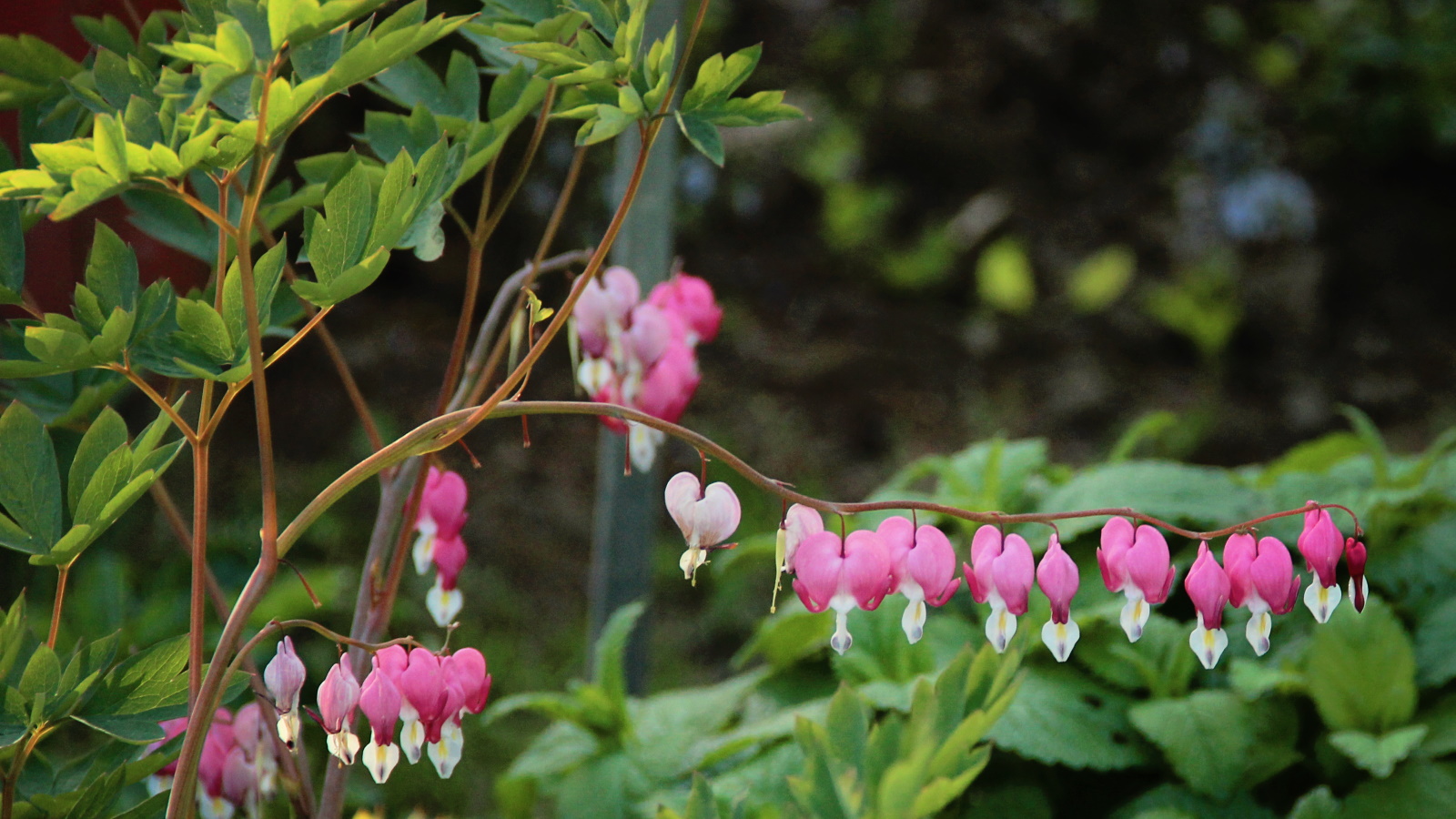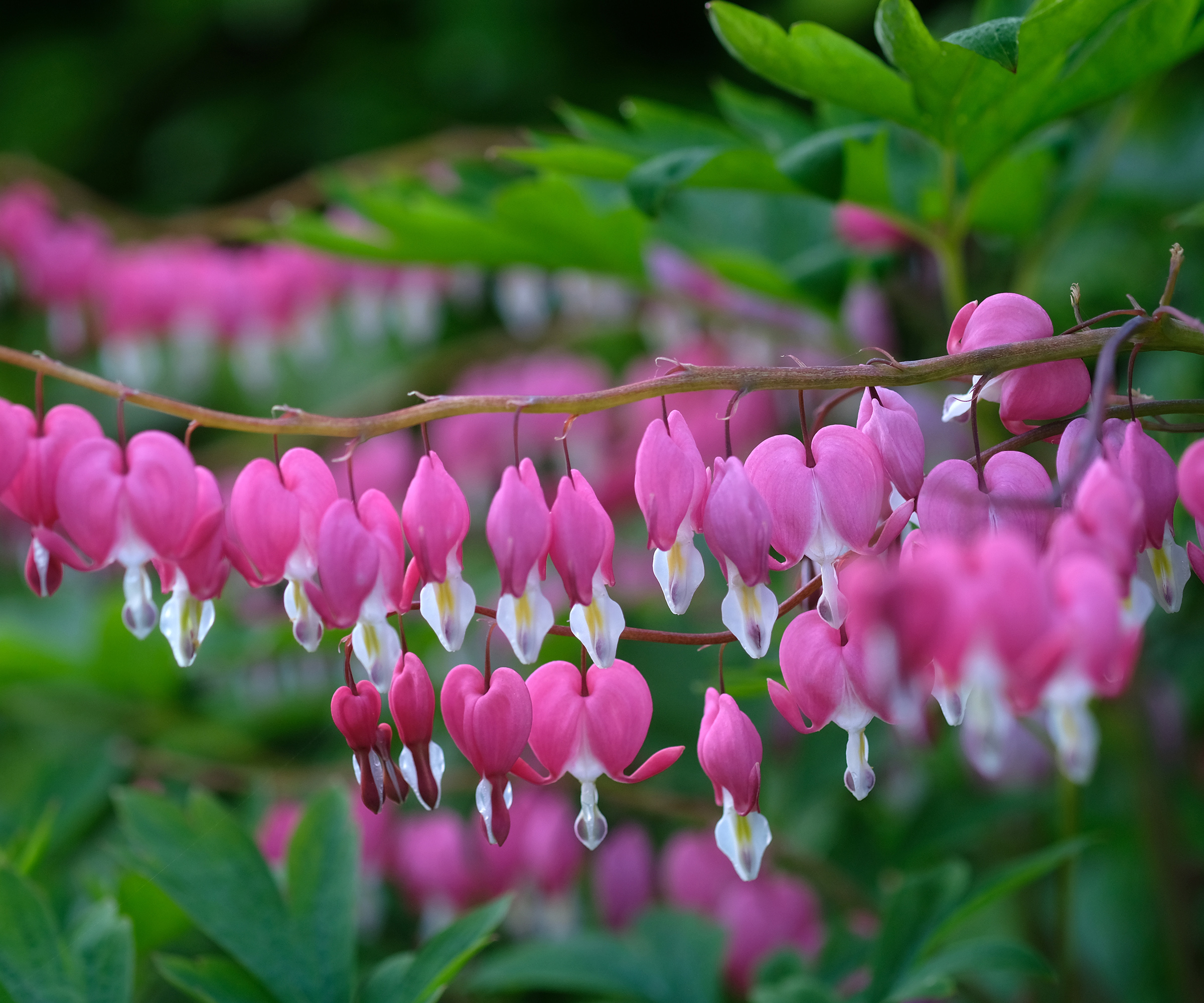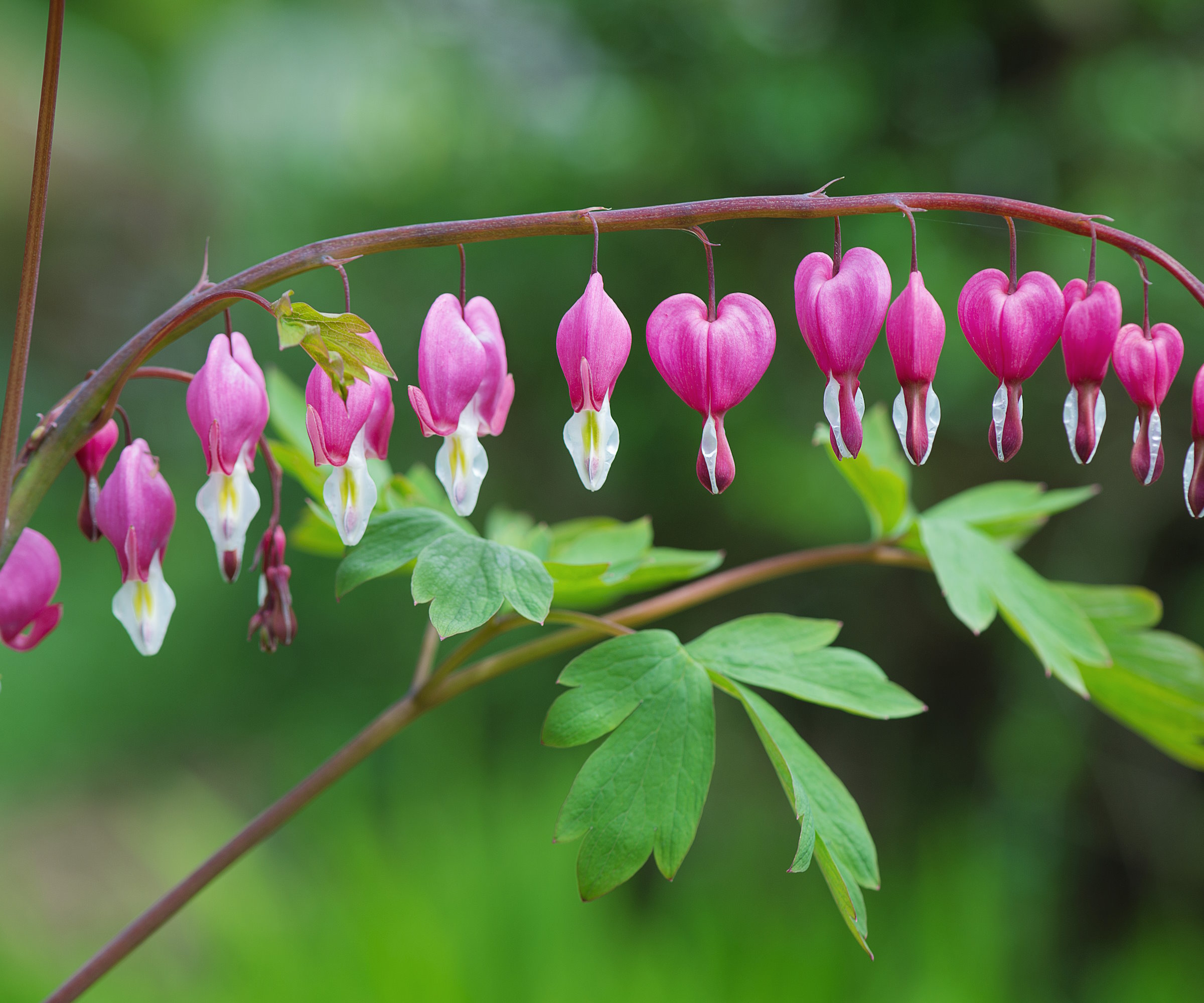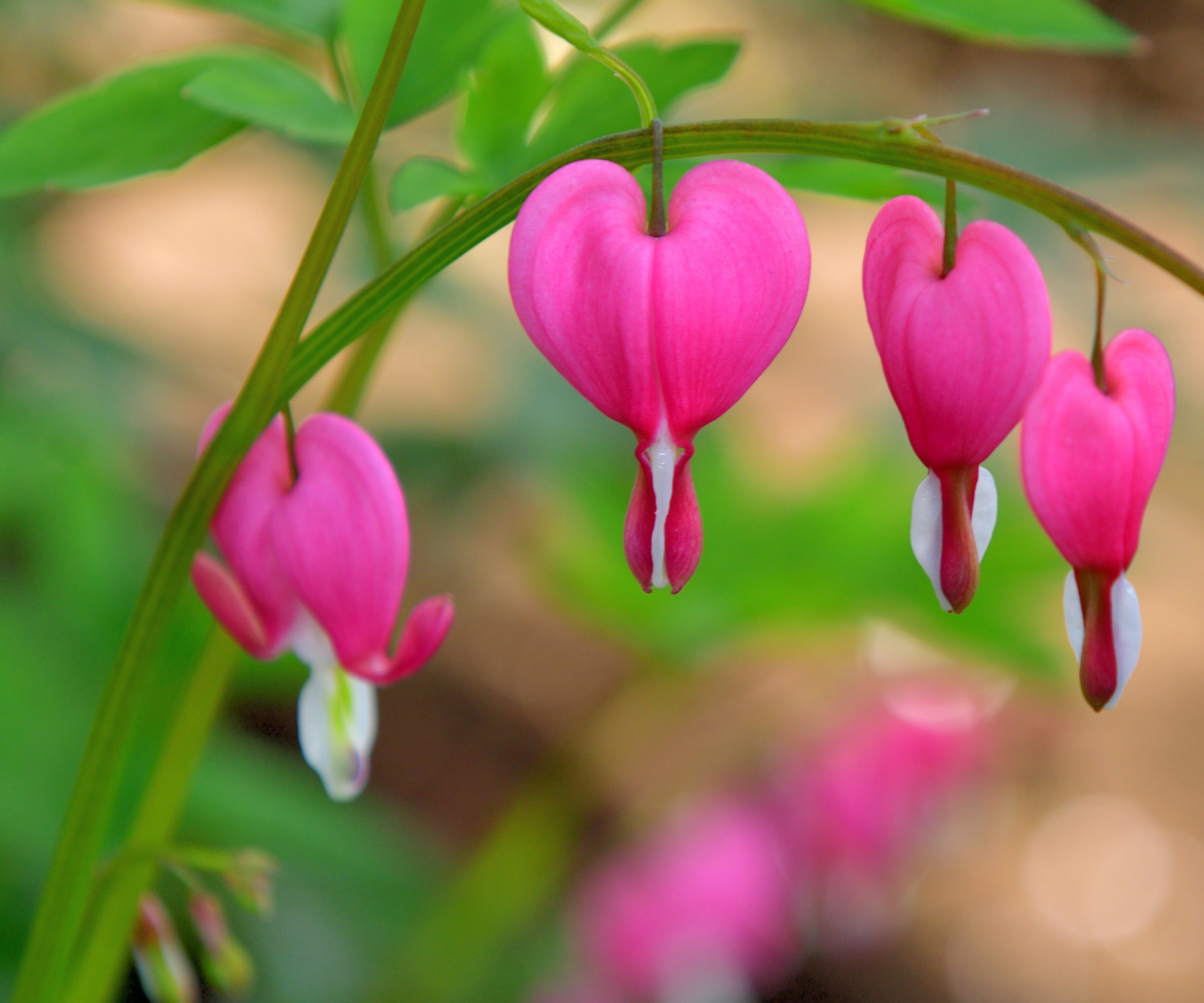
Bleeding heart is a plant unlike any other. Heart-shaped flowers hang down from arching stems in a display that appears almost too romantic to be real. Formerly known as Dicentra spectabilis, bleeding heart, since reclassified as Lamprocapnos spectabilis, is an eye-catching plant that will attract attention wherever it is grown.
This part-shade perennial is native to Asia and found growing at the edge of wooded areas in China, Korea, and parts of Siberia. In early spring, this deciduous plant pushes out new growth, with flowers blooming in the early months of the growing season.
Despite its diminutive and delicate nature, bleeding heart plants are hardy perennials and can help add interest to shady areas of the yard. Here, garden experts provide advice on how best to grow this unique and striking plant so that it will return and bloom year after year.

How to grow bleeding heart
Often considered one of the best shade plants, this perennial can help to add interest and color to tricky spots in the yard, filling gaps in borders under established shrubs and trees. With unusual flowers that attract bees, bleeding heart plants are a must-have if you are keen to attract spring pollinators to your plot.
Things to know about bleeding heart

Bleeding heart plants are a great choice for those living in cooler zones. 'Native to China and North Korea, this is a woodland plant that prefers partial shade,' says Dr Ross Bayton, Director at Heronswood Gardens in Washington.
'While it can grow in full shade, this plant should not be situated in a full sun location,' Ross adds, as too much direct sunlight can damage the foliage. 'Bleeding heart is very hardy,' Ross says, 'and can be grown in US hardiness zone 3 to US hardiness zone 8.'
'This plant is early to emerge in spring,' Ross continues, 'and will be in full bloom by late May. The stems will die down early in the season, so the plant will all but disappear by August.'
As such, bleeding heart plants are ideal filler perennials in garden borders, plugging gaps and bridging the period between spring and high summer.
'This herbaceous perennial will gradually form larger clumps but is not a quick spreader,' Ross says, so gardeners needn't worry about bleeding heart spreading vigorously.
Bleeding heart plants are available to order online from Nature Hills.
Heart-shaped flowers bloom on arching stems which results in one of the most unique perennial displays. This is a must have for any garden.
Growing advice for bleeding heart

- Soil: Bleeding heart plants prefer moist but well-draining soil. I would suggest adding organic mulch, available from Amazon, to your beds and borders every year. This will improve soil health and provide nutrients for your plants to thrive. 'Bleeding heart plants can be grown in pots, but given its rather short flowering period, growing in the ground makes more sense, where later-flowering perennials can cover the gap it leaves in summer,' Ross says.
- Light: This plant grows best in partial shade, but will grow just fine - albeit with fewer flowers - in full shade. The ideal spot would be under a tree or shrub, where the plant can enjoy dappled light. Avoid planting in direct sun, as this will damage the foliage and result in the perennial entering early dormancy.
- Watering: Water your bleeding heart regularly during the first year after planting, monitoring the soil during dry periods in spring and summer. 'Once established, this spring bloomer will generally receive enough water from spring rains,' Ross adds, 'but should be watered through unseasonably dry periods.'
- Fertilizing: 'Providing the soil is rich and well-mulched, as woodland soils often are, then fertilizer requirements are minimal,' Ross advises. While I would not recommend using fertilizer unless you otherwise need to, applying a small amount of slow-release fertilizer, available from Amazon, can help your plant grow and bloom. If your soil is of poor quality, feeding can be done in the springtime.
- Pruning: If you are wondering when to cut back bleeding hearts, this can be done in mid-summer. Typically, after your plant has finished blooming in May and June, bleeding heart flowers and foliage will fade and die. Any remaining yellowing or browning stems can be cut to the base in August, and will shoot again the following spring.
FAQs
Can you grow bleeding heart in a container?
While you can grow bleeding heart plants in pots, it is not recommended. This is because this perennial has a relatively short growing period, emerging in March and April and dying back in July and August. Planting in the ground is a better idea, as other plants will provide floral interest once bleeding heart plants fade.
Growing bleeding heart plants is a great way to add unique blooms in the yard during spring. With such unusual and appealing flowers, it is hard not to fall in love with this plant.
For another shade-tolerant perennial, see our guide on how to grow lily of the valley, for dainty white blooms that will add impact to the darker areas of your yard.







